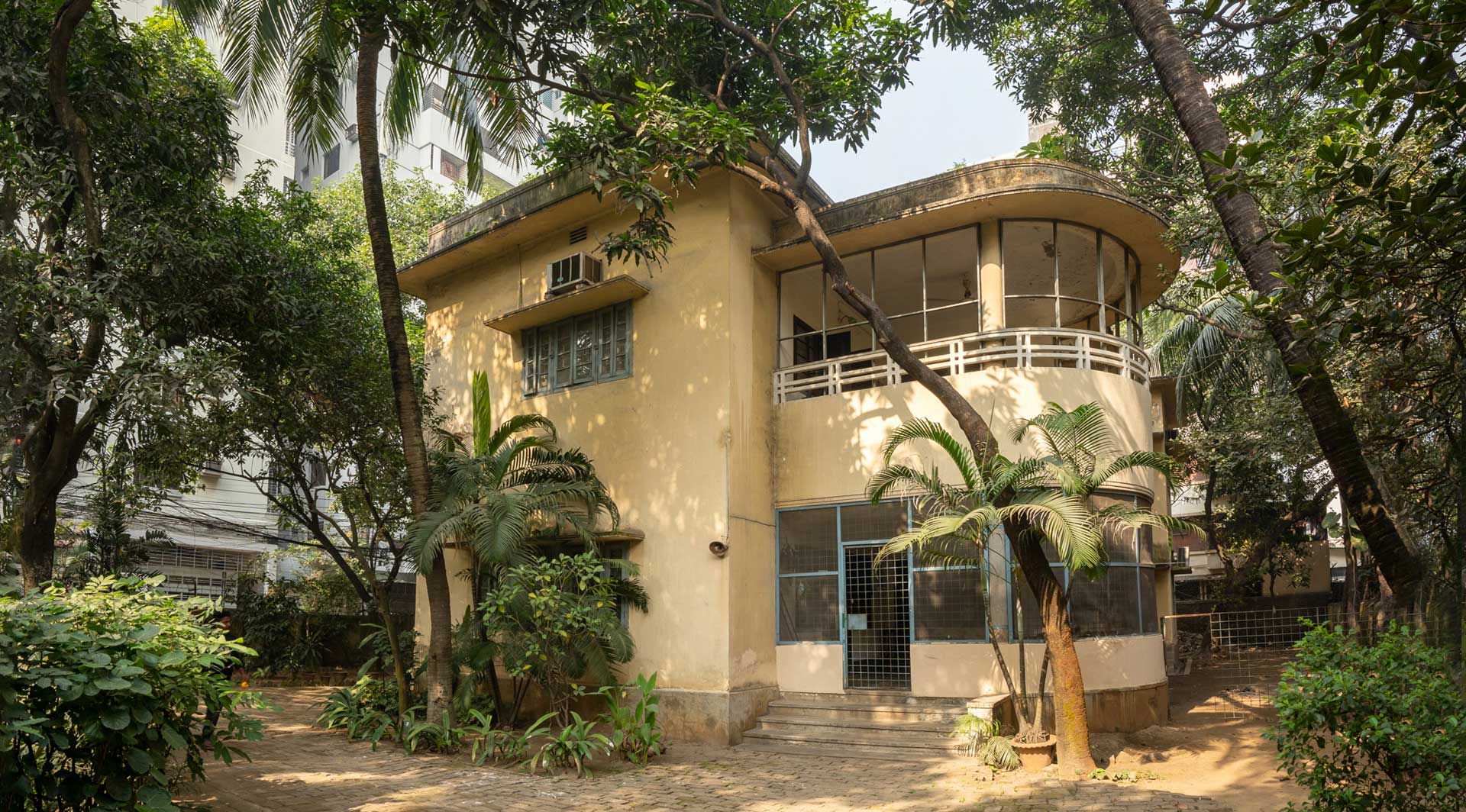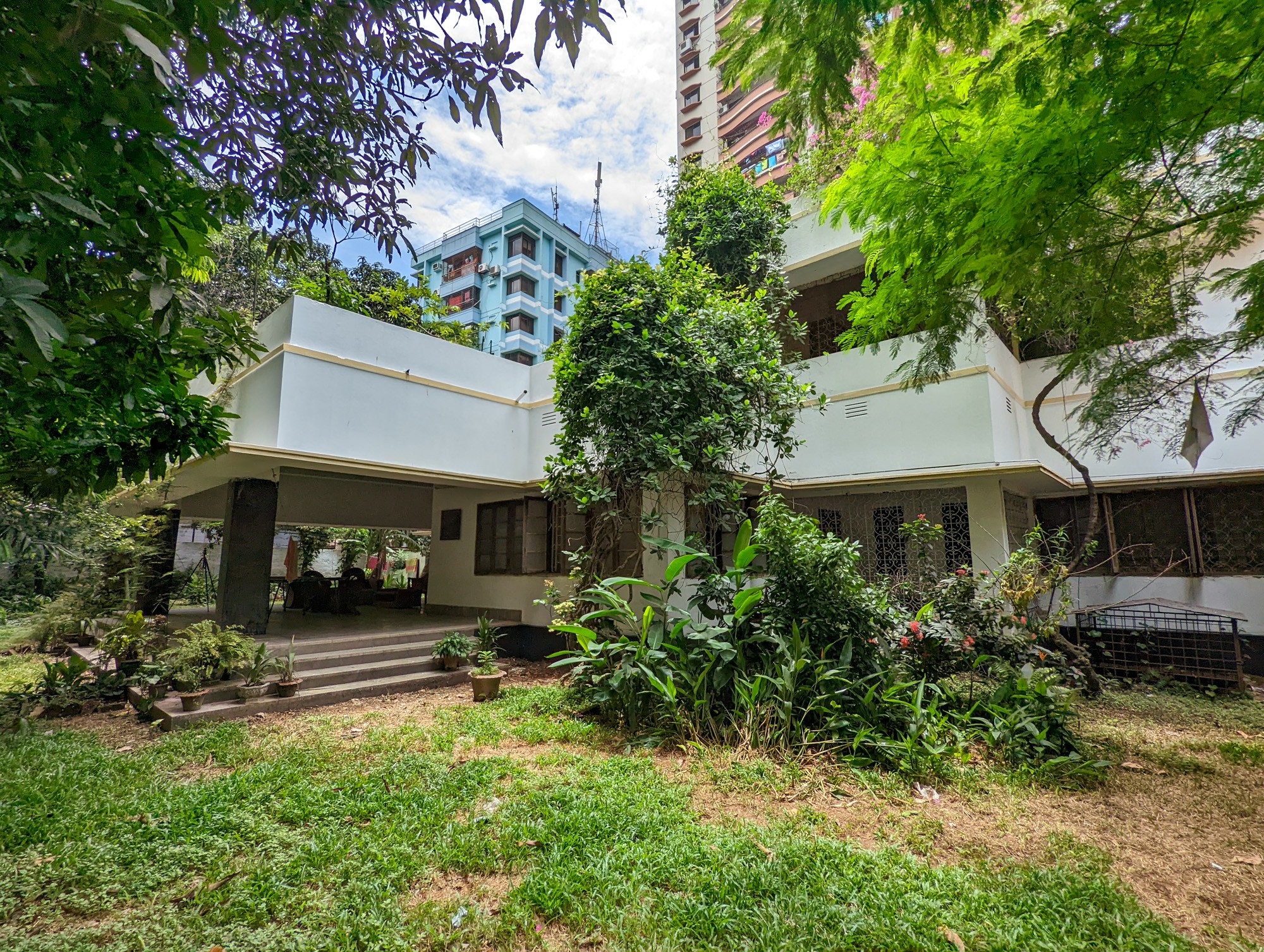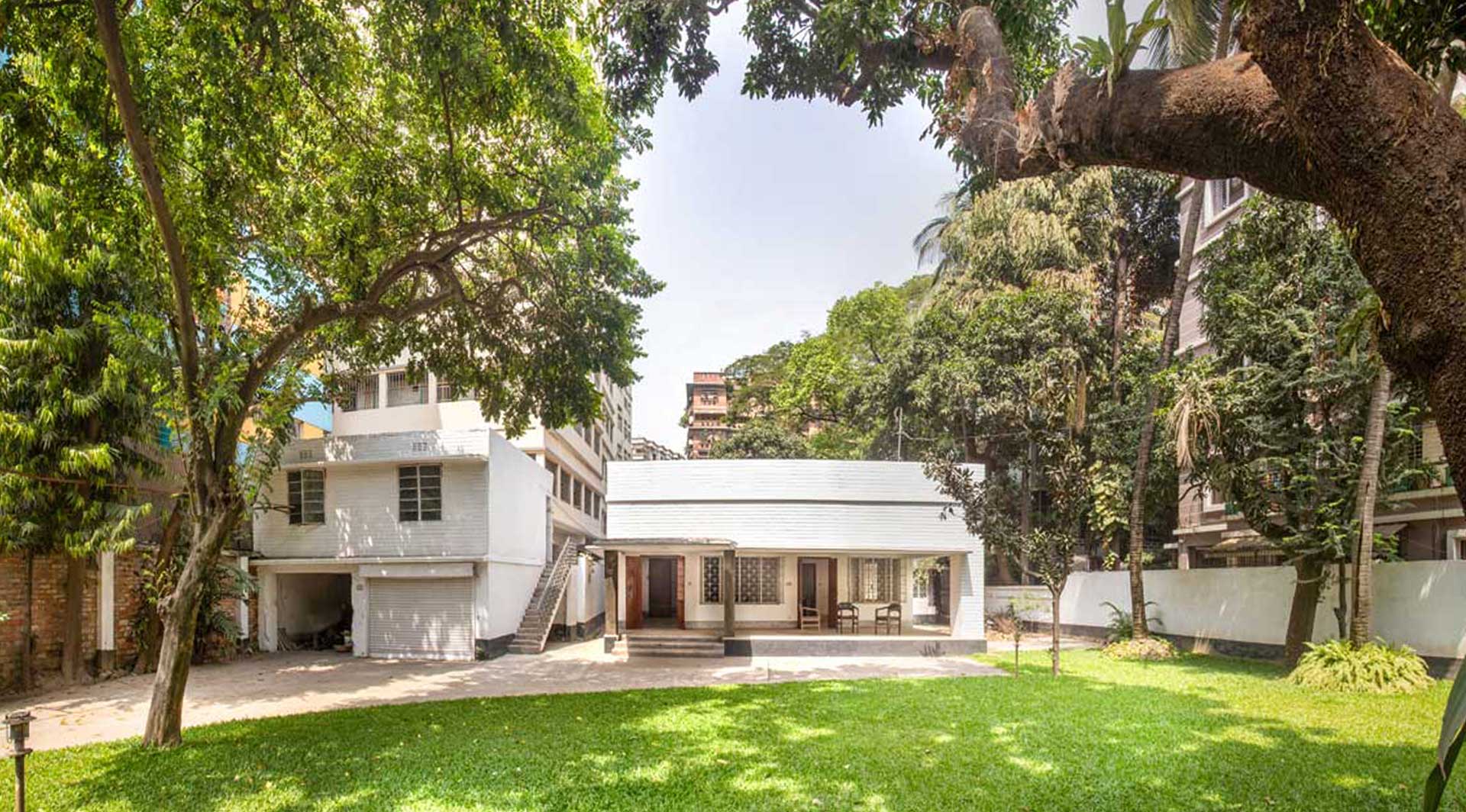Hidden Heritage
Houses of the project
The idea was to select exemplary representatives of distintinctive epochs or cultures in the history of Dhaka. Each building selected possess marked architectural and spatial characters that are recognized for having been conducted with certain dedication. In scale and scope, selected buildings are a substantial arrangement of a residential space. An in-house committee within Bengal Institute has deliberated on a list of buildings from which five have been selected for final documentation at this phase. A major criteria was accessibility and also to select houses from each period and cover a large spectrum of domestic architecture.
Bangshal
Known as ‘Baghbari’ (tiger house) this house is located in the dense urban fabric of old Dhaka. The famous Sat Rawja mosque is on the south, while on the east side is the busy Abul Hasnat Road with some shops and restaurants.
Built around 1920, the house is also called ‘Haturia house’ which is named after the zamindari area in southern Bangladesh where the family had an estate. The property was designated as a waqf estate with the grandson of the original owner as “muttawali”. The house with its compound and the original owning family with a rich history retains much of the flavor of old Dhaka as it was about hundred years ago.
Eskaton
Kabir house is one of the few private properties built in the early 1950’s, amidst the government housing and staff quarters on Eskaton road. Placed in between a large southern lawn and a northern orchard, the asymmetrical looking house was designed to accommodate a large family on two floors with spacious verandahs and common spaces. After the 1960s, the house was developed to accommodate the growing family, and thus it became witness to various stories of its residents’ lives. As it has remained unused for years, the appeal surrounding the house is withering, just like the house itself. And yet, Kabir House still remains as a place that is enriched by the past memories of its inhabitants.
Mogbazar
The modest one-storeyed house, located in Moghbazar, exemplifies the vocabulary of modern architecture of postcolonial Dhaka, that was adapted to fit the city’s tropical climate and local context. As seen in typical houses for the upper middle class who were serving a new government in the 1950s and had started to live in newer parts of Dhaka, Rajshahi house represents the beginning of a new residential type and lifestyle. In today's time, this building remains as a humble place of abode, hidden in the midst of chaotic highrises. This one storied residence is distinctive for its openness and connection to surrounding through spaces. Designed by an architect Arjun Roy from Calcutta, the house was built in 1957. Exhibiting the asymmetrical space organization of modernist architecture, the architect was also attentive to the tropical milieu which is expressed in a big porch facing the south.
Dhanmondi
In a sparsely populated Dhaka of the 1960s, this one storied residence in Dhanmondi was built to provide an enhanced quality of life to its residents. Built as a bungalow-type house facing a green lawn and a spacious porch on the south, it was evidently designed to let the occupants connect the indoors with the outdoors, through the lawn, surrounding greenery and ambient environment. The house remains as a rare example of a bungalow type house from the past while the surrounding landscape has transformed immensely due to construction of multistoried apartments.
Sutrapur
An elaborate mansion on the banks of the former Dholai Khal in Sutrapur area, the Revati Mohan Das Lodge represents a special type of house built by the wealthy citizens of early 20th century Dhaka. With the first house built in 1900 in a neo-Classical architectural style by the rich businessman Revati Mohan Das, and extended with a second house in 1942 by the son Hemendra Kumar Das, the Revati Mohan Das Lodge is now a noteworthy heritage building. The owners of the house played an illustrious role in the political and economic life of the city. The elder Revati Mohan Das was a successful businessman who dealt in investment and various enterprises and contributed to numerous philanthropic projects in the city. Revati Mohan’s son Satyendra Kumar Das was the chairman of Dhaka Municipality for two terms, and younger son Hemendra Kumar Das was the mayor of Mymensingh Municipality for a number of years.





